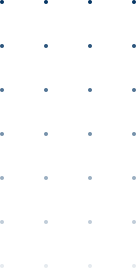How to choose an acupuncturist
Practitioners in the UK will usually be either ‘traditional‘ or ‘western‘ in their underlying philosophy, training, diagnosis and treatment methods. Acupuncture training in the UK, whether traditional or western, places great importance on evidence-based clinical research.
Within traditional acupuncture you will find practitioners of Traditional Chinese Medicine and Five Element acupuncture – both styles are based on the classical literature of Chinese Medicine but emphasise different aspects.


Look for a practitioner who:
– has completed training appropriate to the type of
acupuncture they practise
– is a member of a professional body
– uses sterilised, single-use needles
– holds environmental health certificates* – one for
themselves and one for their premises – from the local
council
– keeps a written record of your consultation and
treatment
– explains your treatment and obtains your consent
before proceeding
– will not advise you to abandon any western medication
or treatment you are receiving
– does not make exaggerated claims about the
effectiveness of treatment
*These certificates should be on display in the clinic. There are lengthy environmental regulations with which acupuncturists should comply. Inspection covers such topics as training and competency, hazards, infection control, cleanliness, personal hygiene, equipment, use and disposal of needles, record-keeping and premises.
Traditional Acupuncture
Traditional Chinese Medicine
Practitioners may describe themselves as ‘traditional’ acupuncturists or Traditional Chinese Medicine (TCM) or Chinese Medicine (CM) practitioners. They take a holistic approach to diagnosing, preventing and treating diseases by identifying the underlying ‘pattern’ or root of the illness and treating that, not just the symptoms. Treatment may combine acupuncture, Chinese herbal medicine, moxibustion, Tui na massage and dietary and lifestyle advice. It is underpinned by concepts such as Qi and Yin/ Yang. This is the style practised in China today.
Five Element
This style of acupuncture was developed by an
Englishman, JR Worsley, in the 1960s and 70s and has many practitioners in the UK and USA, and, to a lesser extent, Europe and Canada. Treatment may include acupuncture and moxibustion and focuses on the patient’s ‘spirit’, with the emphasis on preventative treatment and minimum therapeutic intervention. Diagnosis is based on the theory that illness is often caused by the seven emotions, and by assessing signs such as the patient’s personality, colour, sound and odour.
Professional Bodies and Length of Training – Traditional Acupuncture
ATCM (Association of Traditional Chinese Medicine and Acupuncture UK)
Traditional Chinese Medicine
At least three years in traditional Chinese acupuncture and/or Chinese herbal medicine (usually both) and western biomedical sciences including anatomy, physiology and pathophysiology.
Length of training – at least 3,600 hours, to degree
level or equivalent.
BAcC (British Acupuncture Council)
At least three years in traditional acupuncture, Chinese medicine and western biomedical sciences including anatomy, physiology and pathophysiology.
Length of training – at least 3,600 hours, to degree
level or equivalent
Western acupuncture
Also known as western medical acupuncture or medical acupuncture. Treatment is not based on ancient Chinese theories but on formulae developed for each particular illness and based on a western medical diagnosis. Practitioners are already qualified doctors, nurses or other health professionals. If you receive acupuncture on the NHS it will almost certainly be this style.
Professional Bodies and Length of Training – Western Acupuncture
BAWMA – (British Academy of Western Medical Acupuncture)
Nine weekends over the course of one year.
Members are already qualified medical professionals such as doctors, nurses, midwives, physiotherapists, osteopaths and chiropractors.
BMAS – (British Medical Acupuncture Society)
Foundation course – 24-36 hours online training + two days face to face.
Members are already qualified as doctors, dentists, nurses, midwives, health visitors, physiotherapists, osteopaths, chiropractors and podiatrists.
AACP – (Acupuncture Association of Chartered
Physiotherapists)
Foundation course – Over the course of six days
Members are chartered physiotherapists.
Example
To illustrate the difference between traditional and
western styles, take the example of two patients
with knee pain. One patient has a chronic knee
condition with a dull ache which is worse when the
weather is cold and damp. The other patient twisted
their knee recently and it is inflamed and throbbing.
Both styles of acupuncture are likely to use the
same local points around the knee.
But in traditional acupuncture the two patients are
understood to have different underlying causes for
their pain, and different symptoms, and will
therefore receive different treatment. The first
patient may be given moxibustion, a warming
therapy, in addition to needles. For the second
patient, the practitioner may select certain
acupuncture points believed to reduce
inflammation. In western acupuncture the two
patients may receive exactly the same treatment,
based on a selection of points which have been
researched and established as being an effective
treatment for knee pain.
Ultimately, your practitioner should be someone with
whom you feel comfortable as you will be sharing
information with them about your health, and you may
well be entering into a therapeutic relationship which
lasts several months or longer. Having satisfied yourself
as to their qualifications, training, safe practice and
professional membership you will learn a great deal by
simply ringing them or visiting them for a chat before
you decide whether you want to start treatment with
them.
Contact
Address
Leighton House
Leighton Business Park
Chester High Road
Heswall
Wirral
Merseyside
CH60 3RZ
Phone

Directions
We are located just off the Chester High Road, about half a mile from the Gayton roundabout and 10 minutes from Junction 4 M53.
Turn left at the ‘Welcome to Cheshire’ sign, between the Heatherland and Leighton Car garages (opposite Boathouse Lane).
The John Knight Glass showroom is straight ahead and, as you go through the gates, you will see the Acupuncture First clinic to your left.
